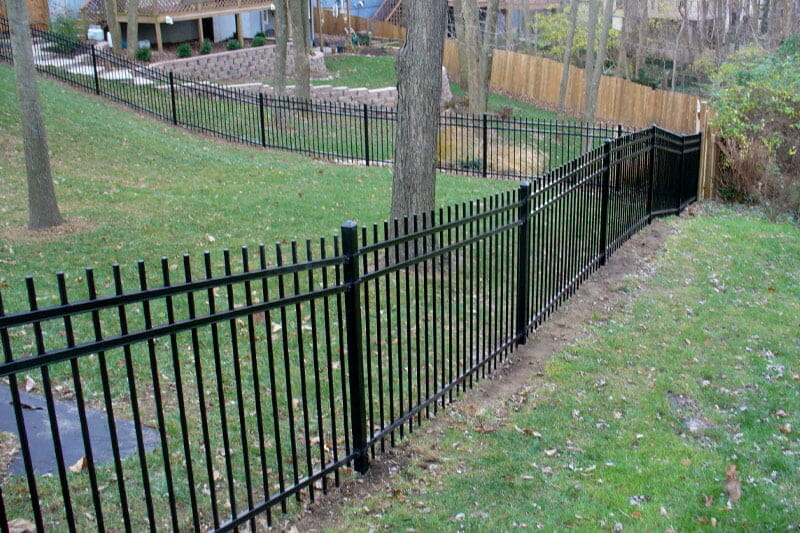Typically, fixing a fence is more cost-effective than fully replacing it. However, there are situations where the cost of repairing a fence may surpass the cost of installing a new one.
The average fence repair cost is $560. This is a lot cheaper than a fence replacement which costs $2,250 on average. These prices normally vary depending on factors such as fencing material costs, labor costs and the type of problem being faced.
Typical repairs like frequent painting and resetting of fence posts are usually preferred by property owners as a short term solution. Entire fence replacement is however the cheapest long-term solution to fix a fence that has outlived its usefulness.
Average Fence Repair Cost
| Service | Quantity | Low | High |
|---|---|---|---|
| Fence Repair Costs | Per Linear Foot | $18 | $50 |
| Fence Repair Labor Cost | Per Hour | $50 | $200 |
| Cost to Repair a 200 linear foot fence | 200 feet | $3,600 | $1,0000 |
Average Cost to Replace a Fence
| Service | Quantity | Low | High |
|---|---|---|---|
| Fence Replacement | Per Linear Foot | $15 | $60 |
| Fence Replacement Labor Cost | Per Linear Foot | $5 | $20 |
| Fence Replacement Material Cost | Per Linear Foot | $10 | $35 |
Fence Replacement Vs Fence Repair Cost Estimates by Material
| Repair (per linear foot) | Replacement | |
|---|---|---|
| Wooden | $600 | $2,850 |
| Aluminum | $322 | $4,250 |
| Steel | $250 | $3,400 |
| Vinyl | $540 | $3,800 |
| Chainlink | $500 | $2,350 |
| Brick | $850 | $5,450 |
| Composite | $485 | $2,750 |
Wood Fence Repair Vs Replacement Cost
The national average wood fence repair cost is $600. Repairing wood fences normally involves repainting and re-staining any damaged fence posts, rails and fence panels. This is usually done to prevent any wood rot and pest damage.
You may however need to replace your wooden fence for an average cost of $31 per linear foot if it gets damaged beyond repair. This translates to a national average cost of $2,900. Labor costs for a new fence installation average $20 per linear foot while wood fence materials average $11 per linear foot.
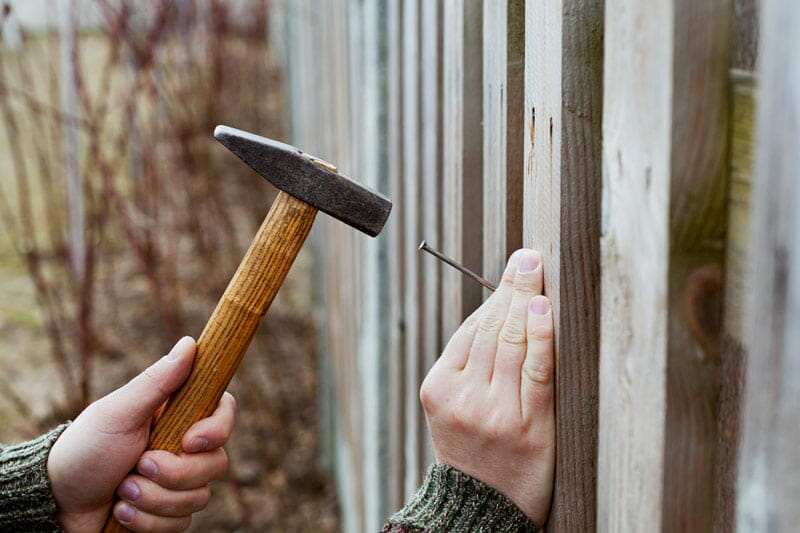
Aluminum Fence Repair Cost Vs Replacement Cost
The average aluminum fence repair cost is $30 per linear foot. Trusted fence contractors recommend replacing a damaged aluminum fence panel instead of welding in new parts into an old fence.
It therefore takes unfastening, detaching and replacing damaged fence panels to repair a fence made of aluminum. You may however need to replace your entire existing fence if it has outlived its usefulness. An average fence repair costs $54 per linear foot of aluminum.
This translates to a national average fence cost of $4,250 with the main cost considerations being labor and materials. Homeowners pay an average of $20 per linear foot for materials and $30 per linear foot for labor.
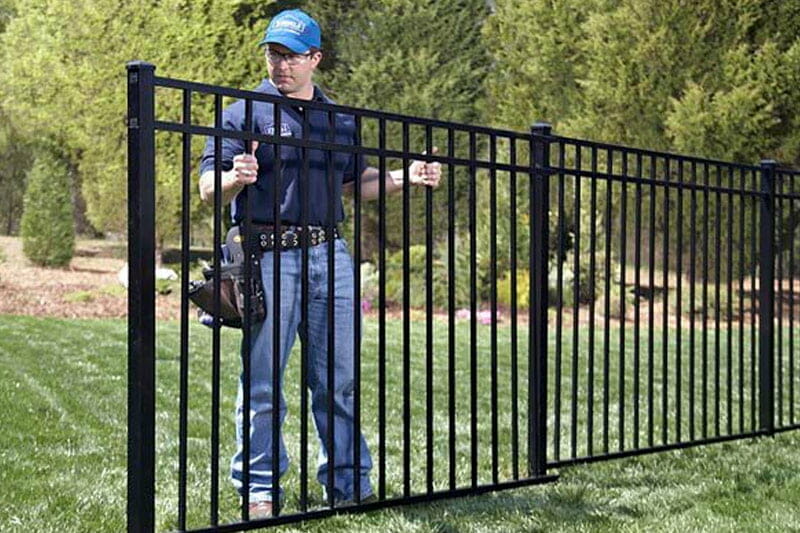
Steel Fence Repair Cost Vs Replacement Cost
Steel fence repairs cost an average of $30 per linear foot to complete. This translates to a total national average cost of $520. Property owners pay an average of $50 per hour for labor and $225 on average for each panel.
Replacing an entire steel metal fence will cost you $30 per section for Corten and Palisade fence types. Galvanized steel metal fences can however cost up to $350 per section. Expect to pay an average of $3,400 for a new steel fence.
Vinyl Fence Repair Cost Vs Replacement Cost
A 150-foot fence repair costs an average of $540 for vinyl fences. This is cheaper than repairing metal, brick and wooden fences. Expect to pay a professional fence contractor an average of $7 per linear foot or $40 per hour for labor in such a project.
You may, however, need to replace your current fence if it is damaged beyond repair. The actual project costs for installing a vinyl fence normally average $3,800 installed. Other cost factors for such a project include the size and design of your new fence.
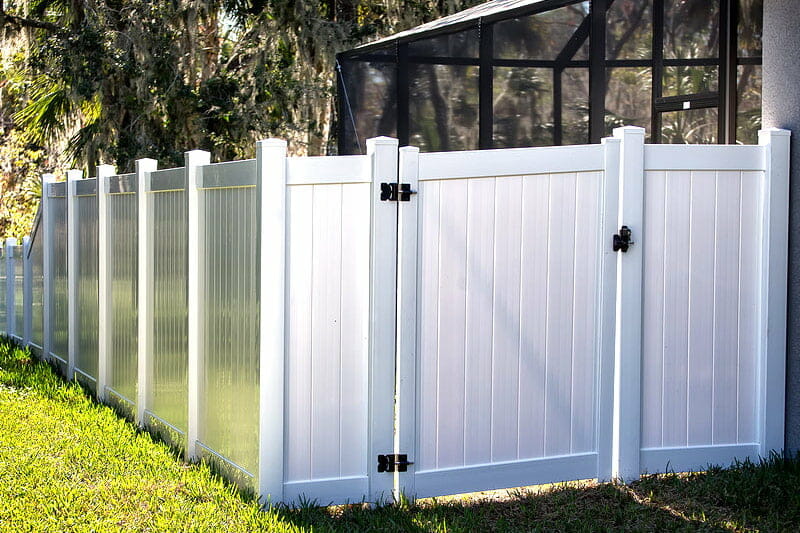
Chain Link Fence Repair Cost Vs Replacement Cost
Most chain link fence repairs cost an average of $500 to complete. This cost is inclusive of both labor and materials. The labor fence repair cost per foot normally averages at $15. The material costs often vary depending on the fence section being repaired.
Property owners pay an average of $2,350 to replace their chain link fences. Chain link fences are therefore more cost effective to install than most fencing alternatives. The main cost factors for chain link fence installation include height, size per square foot, labor and materials.
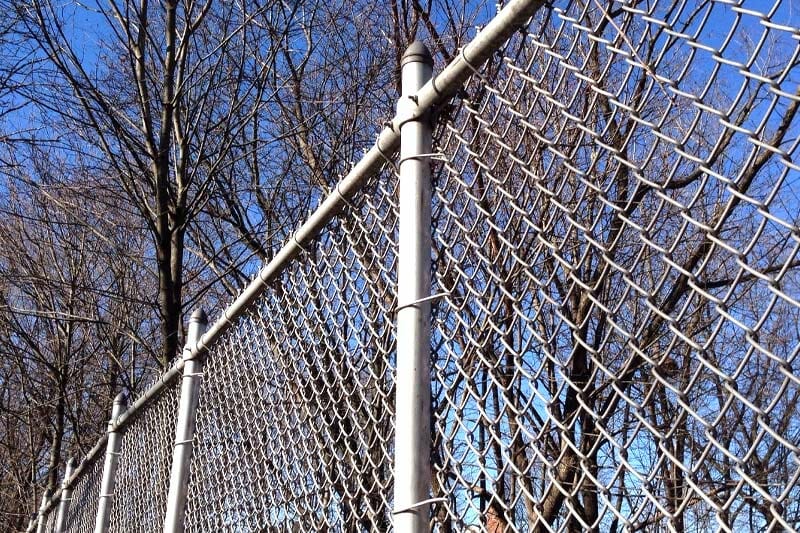
Brick Fence Repair Cost Vs Replacement Cost
Brick fences are one of the most expensive fencing alternatives to repair. This is because brick fences are quite labor and time intensive. Fence repair pros usually charge an average of $850 to repair brick fences.
Installing a new brick fence costs between $3,450 and $7,200 on average depending on whether the bricks are made of clay or concrete and the type of fence detail and finish you go for. Other cost factors for such a project include length, height, design and size of bricks.
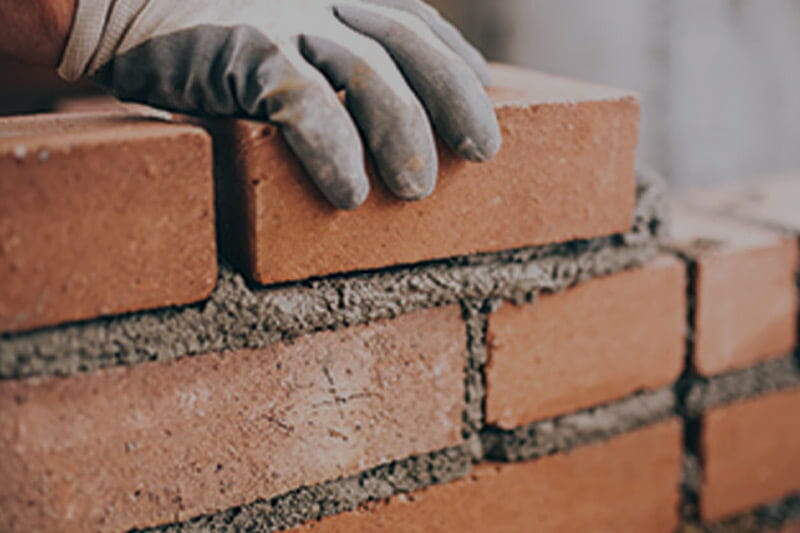
Composite Fence Repair Cost Vs Replacement Cost
The average cost to fix composite fences normally averages at $485 for both labor and materials. It often involves fixing every fence post affected by rot and pests. Any cracked or missing boards and all fallen fence sections are also repaired or replaced.
Installing a fence made of composite will cost you an average of $2,750. Although this is quite costly upfront, the durability and low maintenance nature of composite fences make them cheaper in the long term.
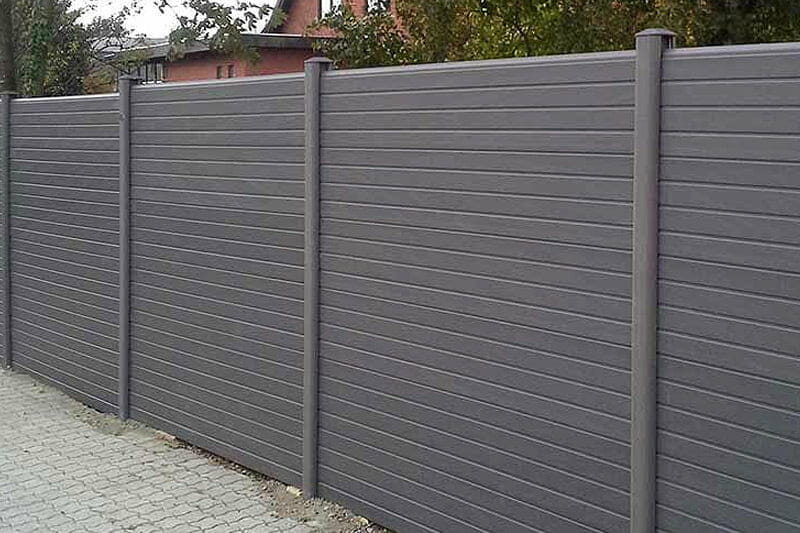
Fence Replacement Vs Fence Repair Cost Estimates by Type
Privacy Fence Repair Cost Vs Replacement Cost
A privacy fence repair costs an average of $825 to complete. Privacy fences are often the largest fences. A privacy fence can exist as a metal, brick, stone, wood or vinyl fence depending on the clients’ preference.
The fence material usually has a significant impact on the final cost. The large size of privacy fences also makes them extremely labor-intensive. This makes the labor cost to repair them rather high.
Expect to pay an average of $4375 to replace your privacy fence if it has been damaged beyond repair.
Picket Fence Repair Cost Vs Replacement Cost
The average cost of a picket fence repair is $300. Picket fences generally require simple repairs because they are made up of very little material and are therefore quite short. Picket fences are mostly constructed using wood and vinyl fencing materials.
They therefore require fence maintenance activities like staining and repainting to keep them from weather damage. Expect to pay an average replacement cost of $1900 if your picket fence’s structural integrity has been damaged beyond repair
Picket fence replacement costs normally vary depending on size, material, gate supports, style and labor.
Split Rail Fence Repair Cost Vs Replacement Cost
Split rail fences cost an average of $500 to repair. Rail fences are mostly used to cover large tracts of land. This is because they are wooden fences with simple fence posts, rails and support posts. They are therefore commonly used on ranches and fields to form animal enclosures.
Rail fences cost an average of $21 per linear foot to replace. A 100 linear foot wood rail fence will therefore cost you an average of $2100 to replace. Enclosing an entire acre will cost you an average of $17500 if you include a fence gate.
Temporary Fence Repair Cost Vs Replacement Cost
Expect to pay an average of $200 for a temporary fence repair. Wire mesh panels, plastic mesh panels and simple metal barricades are all examples of temporary fences. They are normally employed while activities like repairs and landscaping are taking place.
Replacing your temporary fence with a rented one will cost you an average of $90 per panel per month. Such fence costs normally vary depending on the length and height needed, the fence material and extra equipment like stakes and support posts.
Electric Fence Repair Cost Vs Replacement Cost
An electric fence repair costs an average of $275 to complete. Wiring issues are the most frequent problems with electric fences. They normally occur accidentally during activities like gardening and landscaping. Engaging an electric fence expert is usually recommended to resolve such a situation.
Replacing your electric fence will cost you an average of $1300. This cost is inclusive of the transmitter, receivers, wires, collar, charger, voltage meter and batteries. Expect to pay an average of $250 if you are replacing the transformer alone.
Lattice Fence Repair Cost Vs Replacement Cost
A lattice fence repair costs an average of $550 to complete. This is a more attractive fence that can be made of a variety of materials, including vinyl, wood, or metal. When water damage, rust, dents and breakage occurs in some lattice fence portions they must be restored with care to preserve the pattern and aesthetic.
Depending on the quality of material, a lattice fence replacement will cost you an average of $13 per linear foot to complete. High quality lattice wood and vinyl fences can cost you up to $24 per linear foot to replace.
Stockade Fence Repair Cost Vs Replacement Cost
A stockade fence repair costs an average of $525 to complete. A stockade fence is a wooden fence constructed using wood fence panels that are nailed together, side by side, with no gaps in between them. Despite providing good privacy, stockade fences are susceptible to wood rot and pest damage.
Replacing your stockade fence will cost you an average of $22 per linear foot. You are therefore likely to pay around $2200 for an entire fence replacement. This price is inclusive of materials and labor.
How Much Does It Cost to Repair or Replace a Leaning Fence?
The average leaning fence repair cost is $500. This cost can however vary depending on the fence material. A leaning wooden fence is therefore more expensive to repair than a leaning metal fence.
Leaning fences are usually a result of pest infestation, wood rot and improper installation. Replacing a leaning fence will cost you between $1000 and $2500 depending on whether it is a partial or full replacement.
A partial replacement involves replacing fallen fence sections, setting fence posts and stabilizing any moving ground. A full replacement involves completely removing your old leaning fence and putting up a new one in its place.
What is the Cost to Repair or Replace a Fence Post?
The average fence post repair cost is $325. A fence post may need a quick repair if it is wobbly or cracked. Loose fence posts are normally a result of improper installation and damage at the base. Cracked fence posts are mostly due to direct impact and weathering.
A fence post repair project generally involves resetting any loose posts by digging around them and reinforcing the base. Fence contractors can also repair cracked fence posts by patching or treating any splits with resin or mortar.
Expect to pay an average of $350 to replace a fence post. Fence posts that have been damaged beyond repair by storms, pests, rot and accidents certainly need to be replaced.
What is the Cost to Repair or Replace a Fence Gate?
Fence gate repairs cost an average of $325 to complete. The cost of such fence repair projects can however vary depending on size and material. A small wooden fence gate repair will therefore cost significantly less than a large wrought iron fence gate repair.
Homeowners pay an average of $525 to replace a fence gate. This price is however also dependent on size and fencing material. A simple wood gate will therefore be cheaper and faster to replace than a large fancy wrought iron gate
Fence Picket Repair Vs Replacement Cost
Fence pickets can be repaired for $200 on average. Picket damage is often a result of direct impact, accidents and weathering. Repairing a fence picket therefore involves fixing any splits, chips and holes caused by these processes.
Since, the picket material and difficulty to handle have an impact on the pricing, metal pickets are more expensive to repair than wooden pickets. Expect to pay an average of $250 to replace a fence picket.
Fence Panel Repair Vs Replacement Cost
Expect to pay an average of $225 to repair a fence panel. Strong winds and storms are known to cause fence panels to tumble down. A fence panel repair therefore involves relocating and fastening them back into place. Filling up and patching panels with holes, splits and cracks is also quite common.
Homeowners pay an average of $475 to replace a fence panel. This price normally varies depending on the size, fence material and type of the panel. It is considerably cheaper to replace a basic vinyl panel than a beautifully designed wrought iron panel. Fence panels are normally only replaced if they have been damaged beyond repair.
Pool Fence Repair Vs Replacement Cost
A pool fence repair project will cost you an average of $525 to complete. A pool fence is mostly a vinyl, aluminum or chain link fence. It is one of the cheapest fences to repair because it is not too large or sophisticated. Fading, cracks, and accidental dents are the most common problems with pool fences.
Expect to pay an average of $300 to replace your pool mesh. Pool meshes are mostly made of translucent vinyl materials that can allow light to pass through while also creating a barricade. They mostly get damaged or ripped when heavy or sharp objects fall on them. In such cases, a complete replacement is the way to go.
Deck Fence Repair Vs Replacement Cost
Most deck fence repairs cost an average of $600 to complete. This is equal to the national average wood fence repair cost because most deck fences are wooden. Aluminum and vinyl deck fences are however also available.
Deck fence repairs mostly involve dealing with structural damage on the rails. Such damage is often a result of wood rot, excessive moisture and accidental impact. If the rails have been damaged beyond repair, a full replacement is usually recommended.
Expect to pay an average of $925 to replace the rails of a 10-foot long deck fence. This price is however dependent on the fence material chosen. Glass is the most expensive material while composite and vinyl are quite cost effective. Labor will cost you $30 per linear foot or $70 per hour on average.
DIY Vs Professional Fence Repair and Replacement
With the right equipment and skills, you can perform minor fence repairs and even entire fence replacements on your own. You can clean, paint and stain your fence to save the money you would have used to hire a professional. You can also reset wobbly posts and replace any damaged or missing boards.
You should however seek professional advice and expertise if you are faced with a large fencing project that you are not effectively prepared for. This could save you a lot of effort and money in the long-term by guaranteeing that the fencing job at hand is done properly.
Home Garden Guides is a great tool that quickly matches you with the best fencing specialists in your locality. You can get three estimates from local fencing professionals in a matter of two minutes. Kindly follow the steps below to enjoy this great service:
- Scroll to the top of the page and enter your zip code
- Answer questions about your fencing job
- Your fencing details are forwarded to three local experts who will send you a price estimate for your job with some friendly advice.
Should I Replace or Repair a Fence?
A broken or damaged fence is never a pretty sight. Even the best and strongest fences will likely break down over time. When this happens, you’re left with two options; to repair or replace the fence.
To make this decision, you’ll have to consider several factors, including the extent of the damage, the age of the fence, the cost, and the fence material, among others.
In this post, we’ll dive deeper into these factors and the signs to look for to ensure you make the right decision.
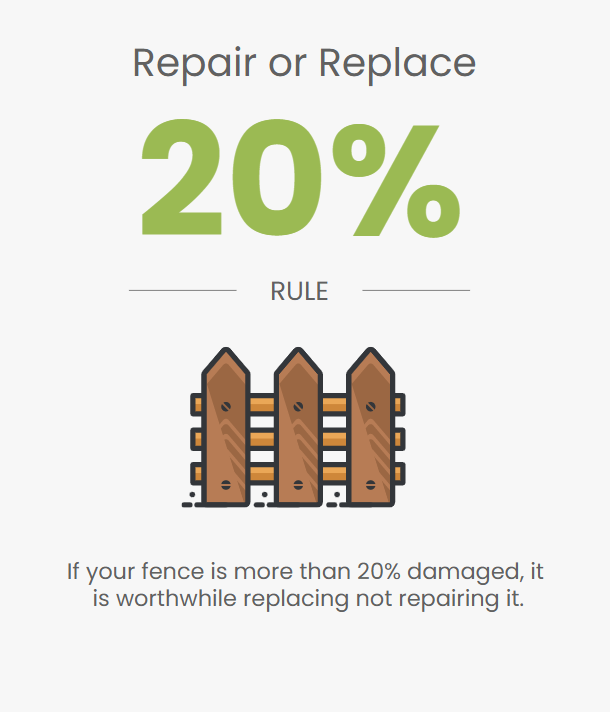
How to decide if it’s time to repair or replace your fence
As earlier mentioned, many factors play a role in determining whether it’s time to repair or replace your fence. However, many homeowners often narrow these factors to the cost and longevity.
Ask yourself these two questions:
- Does it make financial sense to replace the fence instead of repairing it?
- Will the repairs made be sustainable in the long term?
One of the most effective tools that can help you get these answers right is the famous 20% rule.
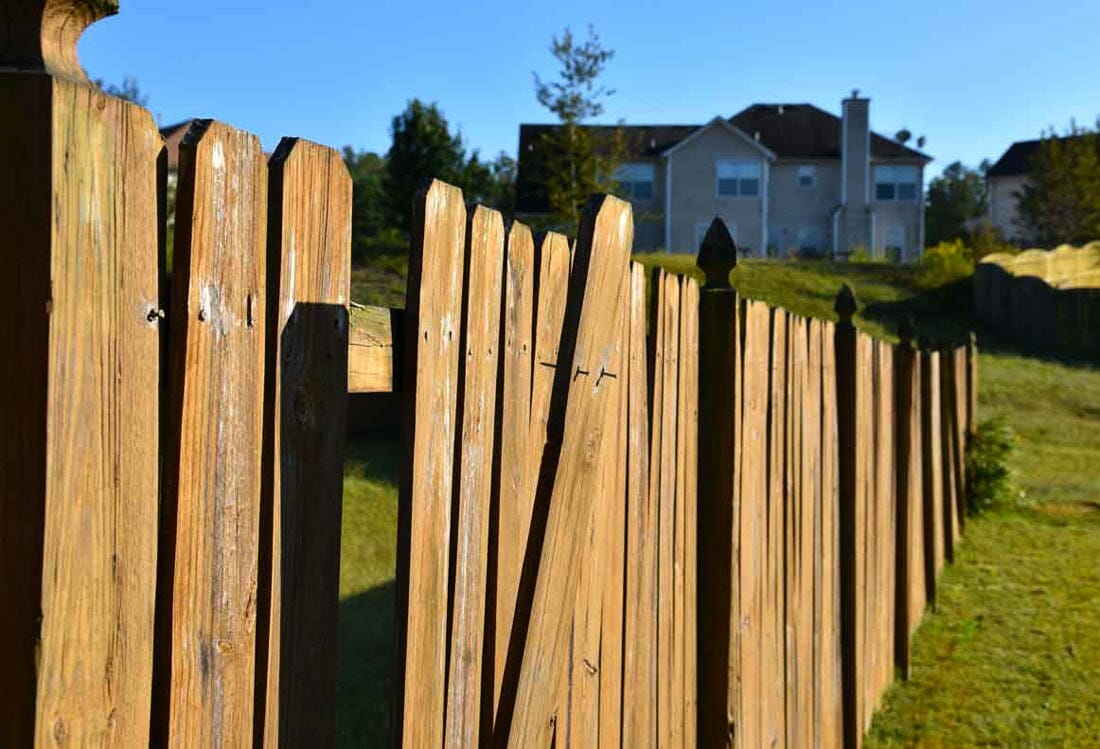
This rule states that if the repairs required on your fence exceed 20% of its size, then it’s time to think of a replacement. In other words, if you have to repair a quarter or more of the boards on your fence, replacing them is the better option.
The rule works because it gives homeowners a substantial metric by which they can measure the damages on their fence. It’s also viable since it helps you save a fortune in future repairs.
Keep in mind; The damaged 20% of your fence is only the visible beginning of your problems. There’s likely to be more serious invisible problems and damages in the remaining 80% of the fence.
By replacing it sooner, you’ll spend more on upfront costs but your new fence will last for decades with minimal need for repairs.
Exceptions to the 20% rule
Despite being a good rule that’s simple and easy to implement, there are exceptions to this rule that you should know, i.e.,
- If the repair cost is more than the cost to replace the fence, always opt for a replacement.
- If your fence is just too old, replacing it is always the right decision. There’s no point in fixing a dying fence.
- If the fence damages are more than 20%, but the cost to replace it is just too expensive, repairing it is the only option that makes sense.
Important: Despite all these exceptions, the best way to determine whether you should repair or replace your fence is by consulting and getting a free estimate from a fence contractor.
An expert can inspect your fence panels and several fence posts to assess the extent of your fence problems before making a final decision.
Signs it’s time to replace your fence
While the 20% rule is a practical way to look into the decision to replace your fence, there are other signs that could help you determine this.
| Problems | Fence affected |
|---|---|
| Storm damage /car accidents | All fences |
| Holes in the fence | Vinyl fencing Wood fencing |
| Leaning fence/fence posts / fallen panels | Vinyl fence Aluminum fence Wood fence Chain link fence |
| Rusting | Steel fencing Wrought iron fencing |
| Rotting | Wooden fencing |
| Missing boards/pickets | Wooden fence Vinyl fence |
| Property line/Local laws | Chain link fencing Vinyl fencing Wooden fencing |
Homeowners who can spot these signs early are able to avoid many unnecessary costs associated with further damage.
The signs include:
Heavy damage
Any damages caused by storms, tornadoes, falling trees, or even car crashes can be very costly to your fence.
In many cases, these accidents cause structural damage to the fence posts that hold your entire fence together.
While you can repair such damages, you’ll find that fixing up your fence posts is very expensive.
Natural disasters’ damage may also cause a shift in the soil structure, meaning more repairs will be required.
Holes in your wooden fence
Holes in your wood fence should be the first signs that you ought to get worried. If they’re just a few holes then some minor repairs are fine.
But once you notice a widespread distribution of the holes across the entire fence, then that calls for a replacement.
However, if the holes are caused by insects like termites or pests like mice, your first step should be exterminating wood-destroying insects.
Contact an exterminator to help you with this before applying any wood filler or wood putty.
Otherwise, your new fencing will just be torn apart like the old fence in a short while. Note that holes can also affect a vinyl fence.
Extreme rusting on steel and wrought iron fences
Rusting is a common problem among all metal fences except an aluminum fence.
If you’ve noticed excess corrosion on your steel or wrought iron fence, applying a fresh coat of paint is off the books.
If not handled quickly, rust can eat away all the metal causing your fence to fall apart. You’ll, therefore, need to replace the whole fence including the rails and posts.
The best way to prevent this problem is to schedule a maintenance service regularly.
Leaning fence
A leaning fence is never good news. It usually indicates that there’s an underlying problem that will eventually cause the fence to topple over.
In most cases, it’s usually caused by shifting soil during soil erosion or weak and unstable fence posts.
The worst thing about this problem is that by the time you notice the leaning fence, there’s little you can do in repairs.
It’s often a sure sign that your fence needs to be replaced.
You’re likely to find this problem in wood fences, vinyl fences, and in some instances, an aluminum fence.
Rotting wood fence
In areas that experience hot and wet climates, moisture tends to build up in wood fences resulting in rotting. This usually appears as stains of gray or yellow on your wood, with the presence of molds and fungi growth.
If not spotted early, the rot will eat your wood posts inside out, causing irreparable damage to the fence.
To avoid this, you can opt for more resistant fence materials such as treated lumber, vinyl fence, or aluminum fence.
Repairs are piling up
If you’ve noticed that you’re always repairing your fence, that’s a sign that it requires replacement. This is a common problem when you’re dealing with aging wood, vinyl, and aluminum fences.
If it’s not broken, some boards are missing, or there are cracks and holes.
Investing in these repairs instead of replacing the fence will cost you a fortune, and you’ll still have to replace the fence after it completely tears apart.
When should you repair your fence?
Generally, the only times you should repair your fence is when the damages are minimal. If money is to be involved, repairs should be cost-effective and easy to fix without disrupting the overall structure of your fence.
So, to know if your fence requires extensive repairs, first conduct an inspection of your entire fence to assess the state of the fence.
Some of the signs to look for include:
- For wood fences: Split boards, rails, small holes, insect damage, and fence panel damage
- For vinyl fences: Damaged boards and panels, warping, rotting, fading
- For Aluminum fences: Loose individual rail, bubbling paint
- For metal fences: Loose rail, rust
FAQ's
You may require a permit to repair a fence if the project you want to undertake is fairly large. Large scale fence repairs involve replacing huge fence portions and digging deep to replace or reinforce shaky posts. Contact your local homeowner’s organization or building inspector’s office for further information.
Warranties are usually included in many fence installations. Such warranties cover all workmanship errors and may even pay for any necessary repairs and replacements. Clients are therefore advised to double-check their warranty policies to see if they can save some money on repairs.
Yes, it does. Most homeowner’s insurance policies cater for additional structures within and around your house such as fences. Any fence damage caused by storms or fallen tree branches can therefore be covered.
In certain states, the cost to repair a fence is shared by the homeowners on either side of the fence. You should therefore find out if this rule applies in your area before starting to repair a fence.
If it does apply, ensure you negotiate the repair costs and come to an agreement with your neighbors before commencing on any repairs.
Expect to pay an additional $150 to repair a fence in an emergency situation. Such situations include when animals are exposed as a result of fallen panels or damaged electric fence wires. Most repair firms and contractors provide this service on the same day it is requested.
It costs an average of $725 to repair back and front yard fences. This fence cost can however vary depending on the material chosen. A simple vinyl or chain link fence is therefore cheaper to repair than a large detailed metal fence.
No, they are not. A vinyl fence costs an average of $550 to repair and about $30 per linear foot to replace. This is much more expensive than barbed wire, electric and chain link fences which cost between $1.5 and $25 per square foot to put up.
Staining your fence will cost you $2000 on average. Fence staining is usually done to prevent moisture damage and to freshen the visual appeal of a fence.
If you live in a location where high winds are common, you may want to invest in a sturdy windproof fence. Expect to pay an additional $17.5 per linear foot on average for such a fence. You can also pay $350 to reinforce your existing fence and make it more wind resistant.


